«Walking through the Underwater History of the Arade River» is the theme of the outdoor exhibition that opened this Saturday, July 23, at the end of the afternoon, at Praça Manuel Teixeira Gomes, in the riverside area of Portimão.
The opening of the exhibition, proposed by the Grupo de Amigos do Museu de Portimão (GAMP) and supported by the Parish Council of Portimão, in close collaboration with the Museum and the Municipality of Portimão, was attended by several figures from the municipal and cultural environment. , namely by Helder Mendes, former director of RTP and diver, who was the author of the documentary “The mysterious boats of the Arade river”, discovered following the dredging carried out in the river in 1970, and broadcast in July 1972.
It was the first time that the valuable and very unknown underwater heritage of the Arade estuary was mentioned, now once again at risk due to the works to expand the cruise port of Portimão.
The exhibition could not have been made at a more opportune time. It invites you to follow the important underwater archaeological research that, over the last 30 years, has been carried out by various local, national and international entities on the Arade River.
From this continuous and participatory research work and, in addition to the Portuguese Federation of Underwater Activities (FPAS) and the Portuguese Center for Underwater Activities (CPAS), in the 70s, the National Center for Nautical and Underwater Archeology (CNANS), the Oceanic Studies Group (GEO), IPSIIS/ DETDA Project, Portisub, Subnauta, the Museum of Archeology and Ethnology of the University of S.Paulo, the Marine Archeology Center: National Institute of Oceanography from Goa, the Institute of Nautical Archeology Texas A&M University, from the United States of America, and CHAM, the inter-university research unit of the Faculty of Social and Human Sciences of the Universidade Nova de Lisboa and the University of the Azores.
The Arade River, considered one of the most relevant national areas of nautical and underwater archeology, has always been used as a place of passage, settlement, civilizational crossing of cultures and commercial relations with the peoples of the Mediterranean Basin, North Africa and from Europe.
From this historical context, a valuable cultural heritage has been discovered and collected, much of which can be seen in the Portimão Museum, where it is safeguarded and exposed.
This is also a very appropriate and pedagogical initiative, at a time when new dredging is being planned in Arade, within the scope of the cruise port works, without defining what will happen to the immense heritage that will be saved by preventive underwater archeology during these works.
The exhibition shows all the prospecting and safeguard work that, over the years, has been required and ensured, which will once again be necessary to prepare and take care of in advance, in logistical, material and human resources, since the characteristics and weaknesses of the materials and archaeological artefacts coming out of an underwater environment require specific treatment and conservation structures.
The model of a technical, scientific and museological program developed by the various entities, teams of archaeologists and the Museum of Portimão is a good and inspiring example of this, given that this typology of interventions in the aquatic environment is not compatible with improvisations and last-minute reactive solutions. hour.
On display at Praça Manuel Teixeira Gomes until the 18th of September, this exhibition by the Grupo Amigos do Museu de Portimão is an opportune dive into the history of the River Arade and a pleasant and unforgettable journey through the underwater cultural heritage of this region.
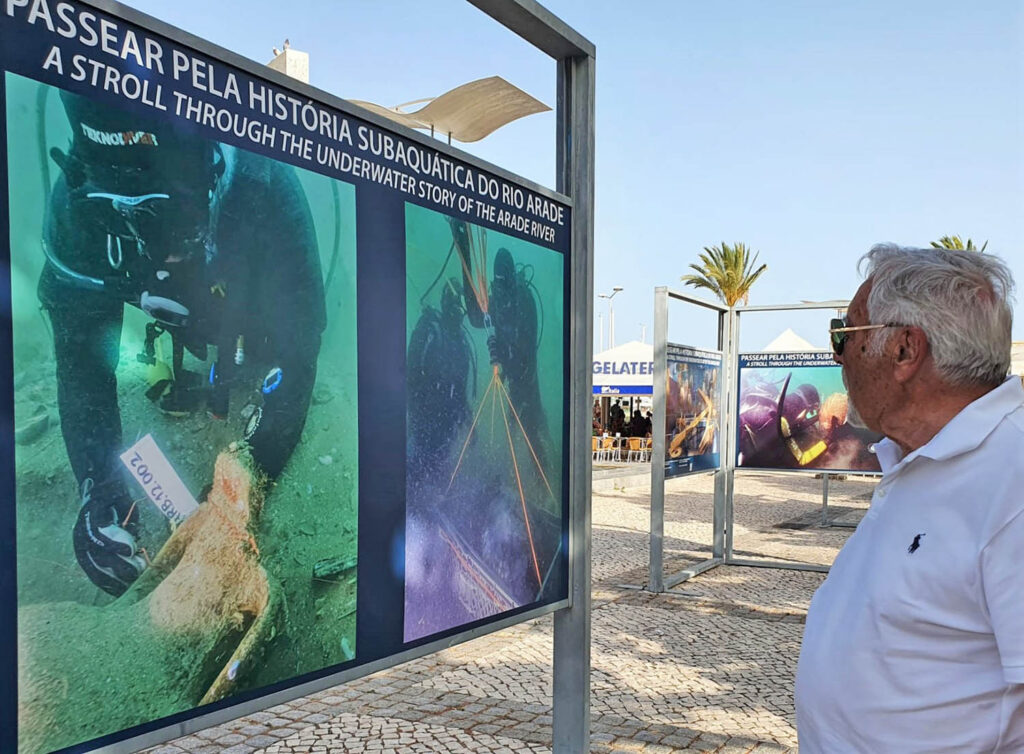
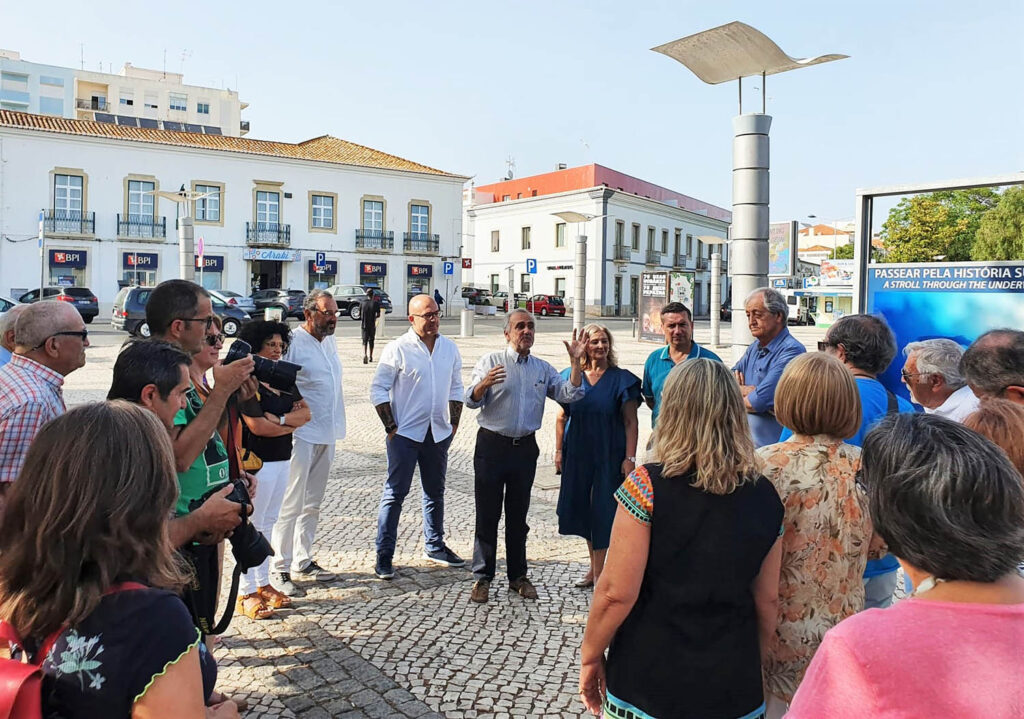
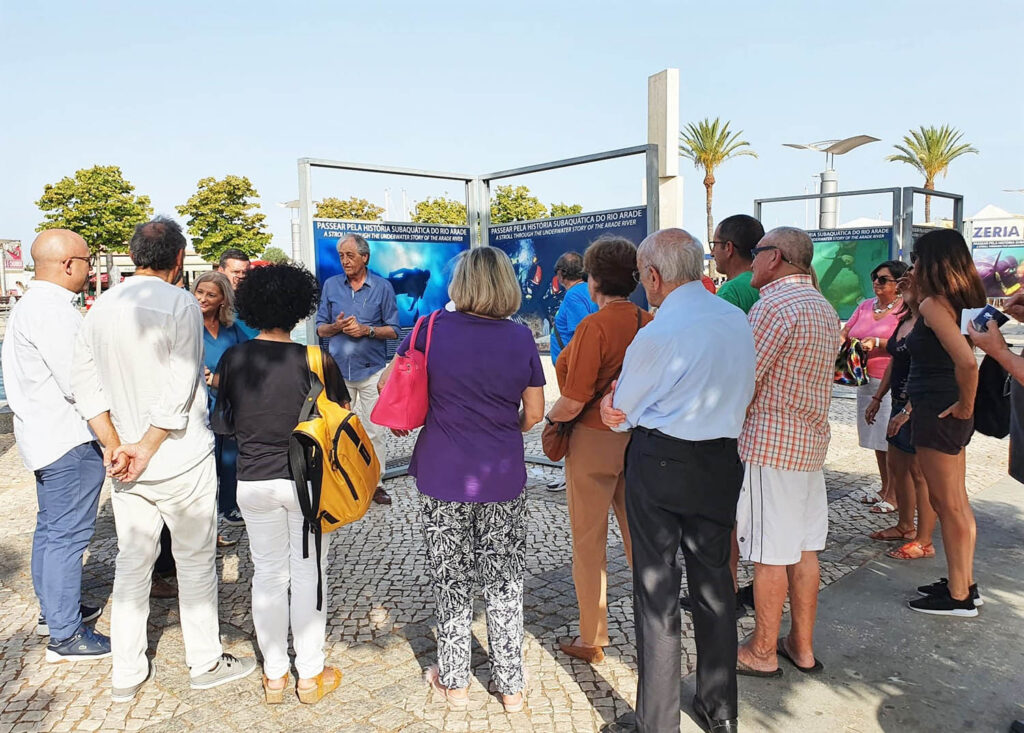
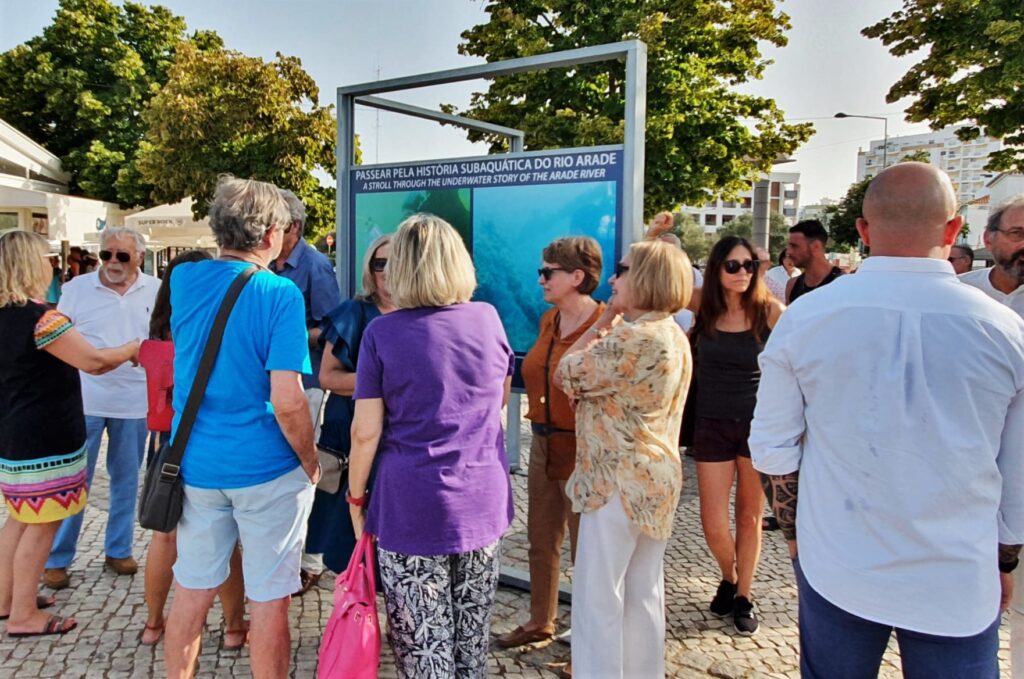

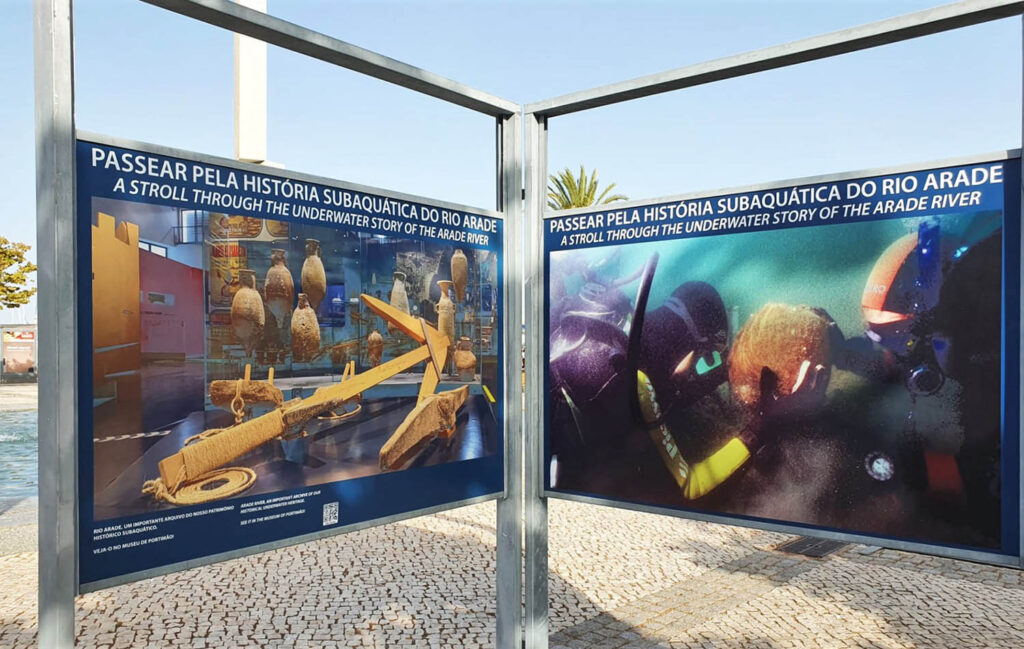
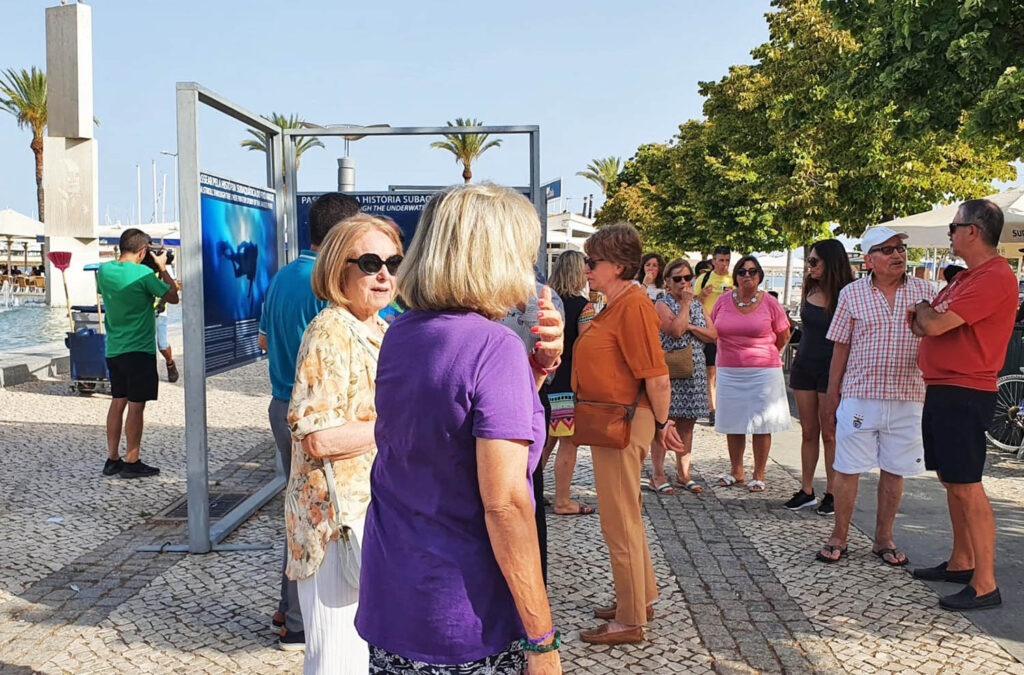
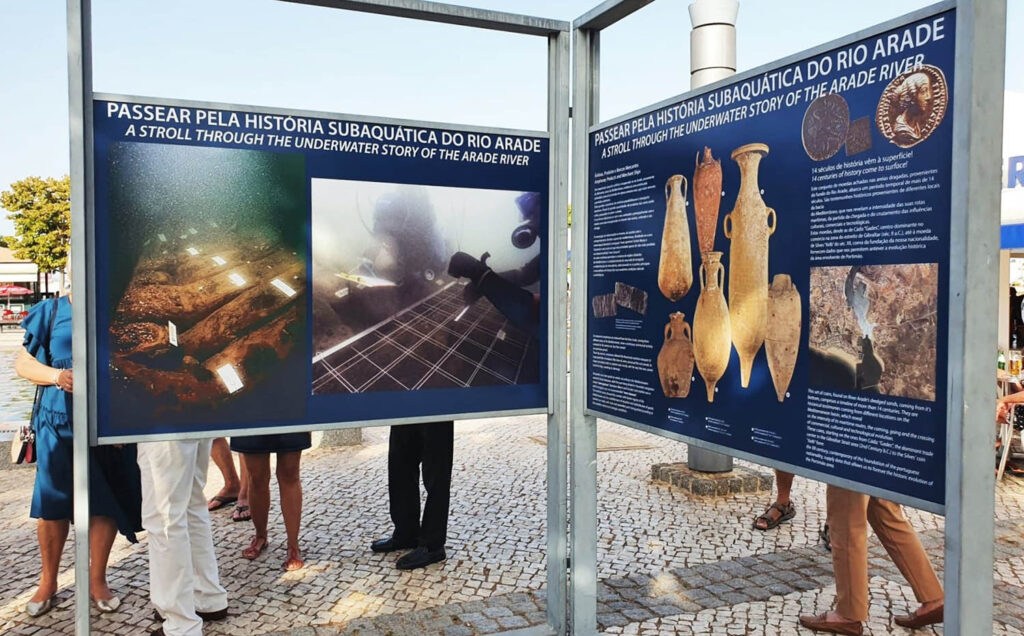
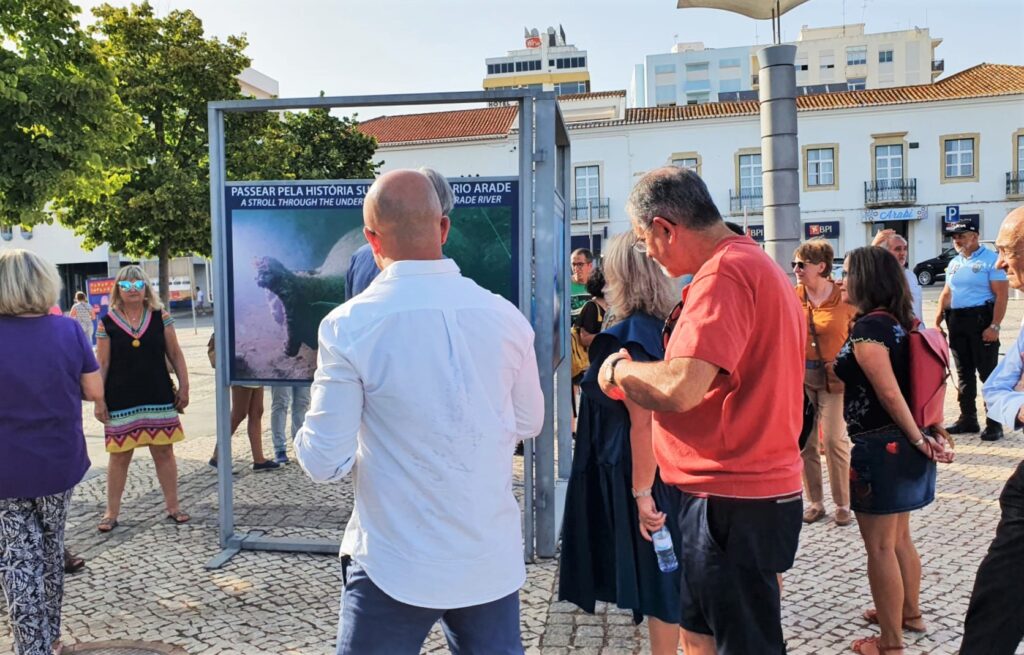
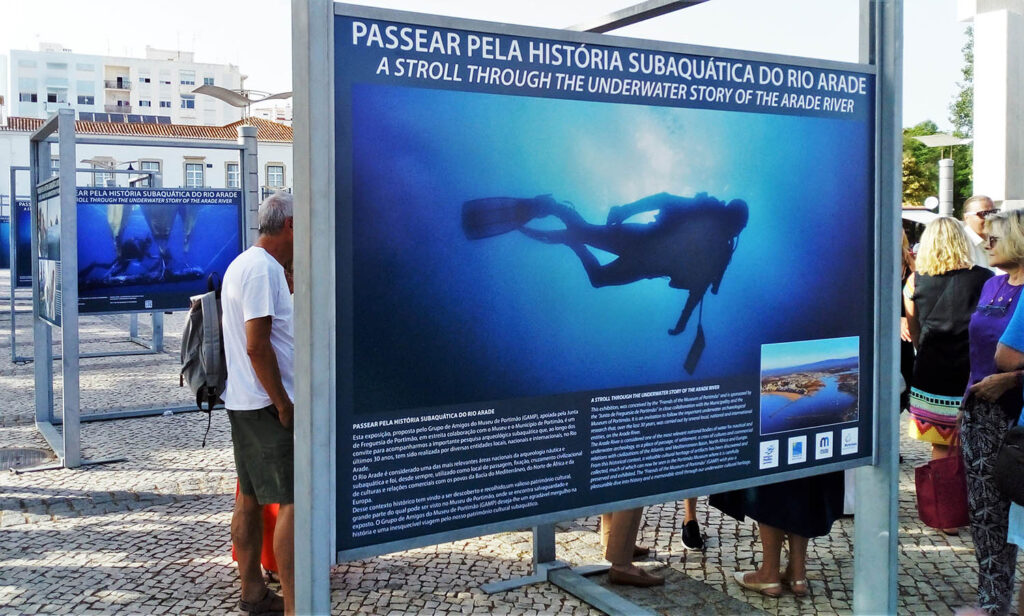



















Comments